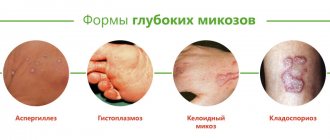Types of diabetic coma
Increased attention to the prevention of the development of diabetic comas is due to the high level of complications of these life-threatening conditions. The mortality rate for diabetic ketoacidosis (DKA) in European countries is 2-7%, in the Russian Federation 7-19% [1].
The incidence of DKA in people living with type 1 diabetes mellitus (DM) is 10-100 cases per 1000 cases. About a third of them end up in hospitals in a state of diabetic coma [2]. At the same time, competent glucose-lowering therapy can significantly reduce the likelihood of developing comatose states and delay the development of other serious complications of diabetes [1].
There are 4 types of comas that develop in diabetes:
- Diabetic ketoacidotic. In the medical literature it is also referred to as hyperglycemic hyperketonemic.
- Diabetic non-ketoacidotic hyperosmolar. It is also hyperosmolar non-acidotic.
- Lactic acidosis (lactic acidosis).
- Hypoglycemic coma [2, 3, 7].
Hypoglycemic
The most common type of coma that occurs as a result of a sharp decrease in blood glucose. Hypoglycemic coma develops quickly and more often affects patients with type 1 diabetes mellitus when the insulin dosage is incorrect or when physical activity is too high.
A decrease in blood sugar occurs when there is an inadequate concentration of insulin in the blood, which leads to the transfer of all glucose from the plasma into the cells. First of all, the nervous tissue of the brain begins to suffer from a lack of glucose, which characterizes the clinic of this condition.
Symptoms
Hypoglycemic coma is accompanied by a sequential development of symptoms:
- A sudden feeling of hunger;
- Rapid increase in weakness and drowsiness;
- Numbness of the limbs;
- The appearance of trembling and cold, sticky sweat;
- Loss of consciousness.
- Rare breathing.
Consequences
With the rapid provision of emergency assistance, which involves the administration of a 40% glucose solution intravenously, the hypoglycemic coma is quickly stopped, and the victim’s condition returns to normal. If there is no one near the victim and hypoglycemia develops, then the victim may develop severe disturbances in the functioning of the central nervous system, including dementia and loss of some functions.
Based on the information received, the conclusion suggests itself - you should not risk your health by neglecting the treatment of diabetes. The consequences of a diabetic coma can be very diverse, from mild temporary disability. To the point of severe disability and death. So be careful about your health, get examined on time and follow the recommendations of your doctor.
Ketoacidotic
Hyperglycemic hyperketonemic coma is an acute decompensation of diabetes, which develops as a result of severe insulin deficiency. At the same time, there is a lot of glucose in the blood, but in the absence of insulin it does not enter the cells, so fat begins to be used as an energy source instead of carbohydrates.
Active breakdown and inclusion of free fatty acids in metabolism leads to the formation of ketone bodies. Their synthesis increases to 1000 mmol per day, which significantly exceeds the ability of the kidneys to excrete ketones in the urine [7].
Changes in blood and urine tests in diabetic ketoacidosis in adults are presented in table [1].
| Laboratory indicators | Values |
| Blood plasma glucose | >13 mmol/l to 18-20 mmol/l [3] |
| Plasma ketone bodies | >5 mmol/l |
| Ketonuria | ≥++ |
| pH | ˂7,3 |
Coma in diabetes mellitus - types, signs, treatment measures, prevention
Diabetes mellitus is one of the most widespread diseases of the endocrine system, characterized by an absolute or relative lack of insulin in the blood.
Despite many years of experience in studying the causes and methods of treating this pathology, diabetes mellitus remains among the diseases whose complications pose a threat to the patient’s life. Despite the indisputable fact that the body of a person with diabetes adapts to small fluctuations in blood glucose levels over time, a rapid decrease or increase in this indicator often contributes to the development of conditions that require emergency intensive care. These are the so-called acute complications of diabetes mellitus - comatose states, which, depending on the mechanism of development and clinical signs, are divided into several types:
- ketoacidotic coma;
- lactic acidemic coma;
- hyperosmolar coma
- hypoglycemic coma;
Causes
The likelihood of developing a coma due to progressive ketoacidosis increases in the following cases:
- Errors in insulin therapy.
- Increased need for insulin in pregnant women, during surgical operations, the prescription of certain drugs (glucocorticosteroids, diuretics, etc.), physical activity, and stressful situations.
- Excessive intake of easily digestible carbohydrates and fats from food in case of severe dietary violations [4, 7].
Prevention
Severe complications of diabetes can only be avoided if you strictly follow medical recommendations for controlling the disease: strict adherence to a diabetic diet, rational physical activity, timely treatment of infectious diseases, avoidance of alcoholic beverages and nicotine, and regular visits to an endocrinologist. It is strictly forbidden to independently change the regimen and dosage of prescribed medications. You should not delay visiting your doctor if you experience symptoms of illness. The development of further events can be dangerous for health and life.
Symptoms
A person with ketoacidosis' condition worsens gradually, usually over 1-2 days or more. The clinical picture is divided into 3 successive stages:
- Moderate ketoacidosis. There is weakness, lack of appetite, thirst, dry skin and mucous membranes, and frequent urination. The smell of acetone appears in the exhaled air.
- Hyperketonemic precoma. Muscle weakness, thirst, dry mouth increases. Abdominal pain, heart pain occur, and decreased vision is noted. The patient is inhibited.
- Ketoacidotic coma. The man loses consciousness. A characteristic rare deep noisy breathing appears with a noticeable odor of acetone in the exhaled air [7].
What is a diabetic coma, what are the symptoms? How to help a person before the ambulance arrives?
Diabetic coma is a dangerous condition in which a person remains unconscious for a long time. His reaction to external stimuli decreases or disappears, the depth and frequency of breathing is disturbed, vascular tone changes, and the pulse quickens or slows down. This condition occurs when carbohydrate metabolism is disrupted - a sharp decrease or increase in blood glucose levels (glycemia) due to improper administration and storage of insulin, as well as acute inflammatory reactions. If the patient is not treated in time, coma can lead to death.
The normal level of glucose in blood plasma is 4-5.9 mmol/l, in capillary blood - 3.3-5.5 mmol/l.
Coma begins to develop if the glycemic level drops below 2.8 mmol/l. However, with a long history of diabetes and high levels of glucose “habitual” to the body, coma can occur at higher glycemic levels - 3.3-6.6 mmol/l and higher.
Depending on the level of glucose in the blood, diabetic coma is divided into two types:
- Hypoglycemic coma is associated with a decrease in glycemic levels.
- Hyperglycemic coma is caused by an increase in glycemic levels. It is divided into ketoacidotic, hyperosmolar and lactic acidemic coma.
Hypoglycemic coma most often occurs in patients on insulin therapy and in patients with type 1 diabetes mellitus. The cause of such a coma is excess insulin, which prevents the body from raising blood glucose levels to normal levels. Excess insulin is caused by:
- insulin overdose (more than half of cases);
- violation of the diet, in which the amount of insulin administered does not correspond to the amount of food eaten (low carbohydrates, skipping meals);
- increasing physical activity without additional intake of carbohydrates (during physical activity the body consumes more carbohydrates);
- taking tableted hypoglycemic drugs (for example, sulfonylureas), which act through an increase in the production of insulin;
- alcohol intoxication (alcohol inhibits the flow of glucose from the liver);
- chronic kidney disease, liver and adrenal failure and other diseases;
- Autonomic neuropathy - damage to the nerve fibers of internal organs (due to damage to the nervous system, the body does not feel hypoglycemia, and therefore cannot respond to a decrease in blood glucose).
Ketoacidotic coma is accompanied by a lack of insulin, a high level of glycemia (more than 14 mmol/l) and a violation of carbohydrate metabolism - metabolic acidosis: in addition to glycemia, the level of ketones in the blood increases (more than 5 mmol/l), and the level of acetone in the urine. As a result of this acid-base balance of the blood shifts towards an acidic environment, i.e. the blood pH decreases.
Causes of ketoacidotic coma:
- diabetes mellitus type 1 (metabolic acidosis is often the first manifestation of this disease);
- improper storage of insulin (non-compliance with temperature conditions);
- incorrect administration of insulin (wrong dose, incorrectly chosen injection site);
- errors in nutrition (excess fat in food, decreased doses of insulin);
- acute diseases, i.e. infections (especially ARVI), in which the body needs increased doses of insulin;
- pregnancy requiring insulin adjustments;
- taking glucocorticosteroids, thiazide diuretics and estrogens that have the opposite effect on insulin, without increasing insulin doses.
Hyperosmolar coma occurs against the background of such an acute condition as hyperosmolar hyperglycemic syndrome. The patient's glucose level increases (usually more than 33 mmol/l) and the concentration of electrolytes in plasma (330-500 mOsmol/l), the blood thickens and fluid is lost, leading to severe dehydration. As a result of such changes, microcirculation in the brain is disrupted. At the same time, the level of ketones does not exceed the norm, and the pH of the blood does not decrease.
Factors for the development of hyperosmolar coma:
- dehydration due to vomiting, diarrhea, burns, bleeding, taking diuretics;
- performing hemodialysis and peritoneal dialysis (cleansing the blood of toxins);
- severe dehydration due to lack of insulin in type 2 diabetes mellitus;
- taking glucocorticoids on a regular basis;
- surgical interventions (increase the body's need for insulin).
Lactic acidemic coma develops against the background of diabetes mellitus and lactic acidosis - accumulation of lactic acid (lactate) in the blood. This condition occurs in patients with tissue oxygen deprivation (hypoxia): anemia, carbon monoxide poisoning, various types of shock and epilepsy. It can also develop after taking metformin, poisoning with ethanol, salicylates, and against the background of diseases that are not initially associated with tissue hypoxia: chronic kidney disease, leukemia, etc.
Symptoms of diabetic coma
Symptoms of hypoglycemic coma . Before loss of consciousness, a state of hypoglycemia occurs, in the clinic of which adrenergic and neuroglycopenic symptoms are distinguished.
Adrenergic symptoms are caused by the release of counter-insular hormones, which neutralize the action of insulin. Their activity leads to the following symptoms:
- tachycardia;
- anxiety, fear, aggressiveness;
- dilated pupils (mydriasis);
- shiver;
- pale skin and increased sweating;
- nausea, severe hunger.
Neuroglycopenic symptoms occur due to glucose deficiency in the brain. These include:
- weakness;
- headache;
- decreased concentration;
- dizziness;
- lack of coordination;
- confusion of speech and consciousness;
- uncontrollable behavior (unreasonable aggression, laughter or tearfulness).
Symptoms of ketoacidotic coma . In the clinical picture of this type of coma, four forms are distinguished:
- Abdominal symptoms: pain in the abdomen due to the effect of ketones on the solar plexus, intestinal cessation, enlarged liver.
- Cardiovascular (collaptoid) symptoms: pain in the heart, increased heart rate, decreased potassium levels in the blood (hypokalemia), arrhythmia (heart rhythm disturbance), a sharp decrease in blood pressure (collapse).
- Brain symptoms: brain damage with increased temperature, increased tone of the neck muscles (the patient cannot lower his head to his chest).
- Nephrotic symptoms: decrease in urine volume or cessation of its excretion by the kidneys.
Symptoms of hyperosmolar coma . The clinic develops gradually over several days. The patient has the following complaints:
- thirst (not in all cases);
- frequent urination;
- dry skin and mucous membranes;
- tachycardia;
- rapid breathing;
- In the future, neuropsychic disorders may occur: agitation, hallucinations, convulsions, lethargy and loss of consciousness.
Symptoms of lactic acidemic coma . This condition develops quickly. It is preceded by:
- muscle pain;
- upset stool, abdominal pain (not always);
- weakness, anxiety;
- headache;
- nausea, vomiting.
Further, cardiovascular failure progresses, shortness of breath occurs, breathing and pulse become frequent. The skin is pale and bluish.
Stages of pre-hospital emergency care
Patients suffering from diabetes, their loved ones and relatives must know how to provide first aid to a patient who develops a coma. For different types of coma, the actions are somewhat different. First aid for hyperglycemic coma
If signs of increased blood glucose appear, you should immediately seek medical help or call a team of doctors to your home. This condition is considered especially dangerous for children, pregnant women and the elderly. To prevent serious consequences, the actions of relatives should be as follows:
- If there is no breathing, the pulse cannot be felt, it is necessary to perform an indirect cardiac massage. In many cases, this helps save the patient's life.
- If a person is unconscious, but breathing continues, it is necessary to turn him over to the left side, making sure that in case of vomiting he does not choke.
- Fresh air must be allowed into the room; crowds should not be allowed near the patient. After the ambulance arrives, doctors need to be informed about the time of the attack, the characteristics of the patient’s behavior, and its symptoms.
Actions for hypoglycemic coma
- During a coma due to diabetes, emergency care should be immediate. A person needs to be given sugar or tea with it added. In addition to sugar, you can use honey, jam and other products containing glucose.
- If the condition worsens, the help algorithm is as follows:
- Call an ambulance.
- Place the patient on his left side. A common symptom of coma development is vomiting. It is important to ensure that if it occurs, the person does not choke.
- If there is information about what dose of glucagon the patient usually administers, this should be done urgently. Often patients suffering from diabetes mellitus carry an ampoule with this medicine.
- Before the ambulance arrives, it is necessary to monitor the person’s breathing. If it is absent and the heartbeat stops, artificial respiration and chest compressions must be performed.
Important! If the person is conscious, you have given a glucagon injection, and the patient’s condition improves, you still need to call an ambulance. Doctors must take control of the patient.
Help with hyperosmolar coma
Hyperosmolar coma develops with excessive consumption of carbohydrates, as a result of injuries, against the background of diseases of the gastrointestinal tract in diabetes mellitus. In this case, the patient experiences thirst, weakness, and fatigue. In severe cases, confusion, speech inhibition, and the development of seizures are observed.
First aid for such patients is as follows:
- Call an ambulance.
- Turn the patient onto his left side.
- Prevent tongue retraction.
- Measure the pressure. If it is high, give the patient an antihypertensive drug.
Such actions will help support the patient’s vital processes until the ambulance arrives.
What to do with ketoacidotic coma
The main actions for this type of complication should be aimed at maintaining the person’s vital functions (breathing, heartbeat) until doctors arrive. After calling an ambulance, it is necessary to determine whether the person is conscious. If the patient’s reaction to external stimuli is absent, his life is threatened. If there is no breathing, artificial respiration should be performed. The one who performs it must monitor the condition of the respiratory tract. Mucus, vomit, and blood should not be present in the oral cavity. If cardiac arrest occurs, perform indirect massage.
If the type of coma is not determined
The first rule for providing emergency care when signs of a diabetic coma appear is to call an ambulance. Often the patients themselves and their relatives are informed about what to do in such situations. If a person is conscious, he should inform his family about options for help. In case of loss of consciousness, it is necessary to ensure the patient's airway is free. For this, the person is placed on his side and, if necessary, mucus and vomit are removed. This will help avoid tongue retraction and respiratory arrest.
You should contact a medical facility when the first alarming symptoms appear, without waiting for the situation to become more complicated. This will help prevent the development of serious health consequences and prevent the death of the patient.
Endocrinologist M.V. Tukalskaya
Hyperosmolar non-acidotic
Non-ketoacidotic hyperosmolar coma also develops due to acute decompensation of diabetes. It is based on a sharp decrease in insulin levels and loss of fluid from the body. In this case, there is no excessive formation of ketone bodies and acidosis [7].
| Laboratory indicators | Values |
| Blood plasma glucose | >30 mmol/l |
| Blood osmolarity | 400-500 mOsm/l [4] |
In a general blood test, an increase in hemoglobin and hematocrit levels is noted due to a decrease in plasma volume. There is no acetone in the urine [3].
Lactacidemic
Lactic acid coma is also called lactic acid coma and develops more often than other types of emergency conditions in diabetes. Lactic acid coma is the most dangerous acute condition, with mortality reaching 75%. This condition can develop against the background of provoking conditions:
- Massive bleeding;
- Myocardial infarction;
- Generalized infectious process;
- Heavy physical activity;
- Kidney or liver failure.
As a result of lactic acidemia, ketone bodies and pyruvic acid are broken down in the blood with the formation of an increase in the concentration of lactate and a decrease in pyruvate - chemicals that shift the acid-base balance of the blood to the acidic side. In 30% of victims, hyperosmolar coma is initially noted.
Clinical picture
The condition of patients is rapidly deteriorating, and negative dynamics are observed. The onset is usually sudden, with severe development of symptoms. Diabetics note:
- Severe muscle pain and weakness;
- Drowsiness or, conversely, insomnia;
- Severe shortness of breath;
- Abdominal pain with vomiting.
With further deterioration of the condition, convulsions or areflexia associated with muscle paresis may occur. These symptoms arise as a result of brain damage due to energy deficiency and disturbances in the ionic composition of the plasma. Even with proper and timely treatment, the prognosis for a victim of lactic acidemia coma is unfavorable.
Causes
Most often, hyperosmolar non-acidotic coma develops in elderly people living with type 2 diabetes [3]. Provoking factors include any diseases and conditions in which the body actively loses fluid:
- irrational use of diuretics;
- diseases accompanied by recurring diarrhea and vomiting;
- staying in conditions that cause active sweating (working in a hot shop, moving to a country with a hot climate, etc.).
Also, this type of diabetic coma can develop with myocardial infarction, massive bleeding, and in patients on hemo- or peritoneal dialysis [7].
Symptoms
The patient's health deteriorates slowly over 1-2 weeks. At the precoma stage, severe thirst, dry mouth, dryness and decreased skin turgor, and frequent excessive urination are noted.
In a coma, as a result of fluid loss, the patient's facial features become sharpened, the eyeballs sink and become soft to the touch. There is no smell of acetone in the exhaled air. Various neurological disorders are characteristic: pathological reflexes, nystagmus, paralysis, epileptiform convulsions. The result of blood thickening can be thrombosis of arteries and veins [3, 7].
Lactic acidotic coma - development mechanism and symptoms
This type of diabetic coma is less common than other types, but is one of the most severe complications of diabetes. This type of coma develops as a result of a complex biochemical reaction - anaerobic glycolysis, which is one of the alternative methods of producing energy, the residual product of which is lactic acid. If in a healthy body the level of lactic acid is in the range of 0.5 - 1.4 mmol/l, then in lactic acidotic coma this figure reaches 2 mmol/l when the blood pH level drops below 7.3. In addition, there is a change in the lactate-pyruvate balance towards an increase in lactate concentration.
Lactic acidotic coma often develops against the background of shock, intoxication, sepsis, extensive blood loss, cardiovascular and renal failure. Despite the fact that the liver is normally capable of processing more than 3 thousand mmol of lactic acid, due to the state of tissue hypoxia that accompanies the above pathological processes, the ability to process lactic acid becomes significantly less than the lactate formed. If patients are given intravenous solutions containing xylitol, sorbitol, fructose and other sugars, this is also a provoking moment for the development of lactic acidotic coma.
The onset of this type of coma is usually sudden, characterized by signs of depression of consciousness (apathy, drowsiness, delirium), as well as rapid loss of appetite, nausea, vomiting, and muscle pain. Upon examination, the patient's skin is pale and cold. The effect of lactic acid on the cardiovascular system is manifested by increased heart rate, decreased blood pressure, impaired excitability and contractility of the myocardium, paresis of peripheral vessels, and collapse.
Patients with the first signs of coma need prompt hospitalization. Confirmation of the diagnosis of lactic acidotic coma is carried out based on laboratory data, namely a high concentration of lactic acid and pyruvate in the blood, as well as a violation of the acid-base balance towards acidification.
First aid
Correction of the patient's condition is carried out in a medical institution. People with moderate ketoacidosis are hospitalized in the therapeutic/endocrinology department, and in a state of precoma and coma - in the intensive care unit [4].
At home you can:
- conduct a rapid glycemic analysis if you have a glucometer;
- call an ambulance.
A person with ketoacidosis can be given 20 units intramuscularly. short-acting insulin (RAI) [4]. With moderate hypoglycemia, the patient needs to take easily digestible carbohydrates (sugar dissolved in tea, water, a piece of bread) [3].
In the emergency department, a urine test for ketone bodies is additionally performed and infusion therapy begins with the introduction of a 0.9% NaCl solution at a rate of 1 l/h [4].
Consequences
Diabetic coma has a number of adverse consequences for human health, as it contributes to the rapid progression of diabetes, disrupts or aggravates existing disorders in the functioning of internal organs. For example, older people who have suffered a hypoglycemic coma develop:
- cerebral edema (in 26% of cases);
- acute cardiovascular failure (22%);
- atrial fibrillation (13%) [6].
Fear of hypoglycemia can cause inadequate blood sugar control [5].
Possible complications
The development of hypoglycemic coma can lead to severe dysmetabolic disorders that can damage most organs and systems. With the development of hypoglycemic coma, the removal of acetone from the body is impaired. The accumulation of acetone in the blood leads to intoxication of the body. The most serious complications are associated with inhibition of the vasomotor and respiratory centers of the medulla oblongata. With the development of deep coma, death is possible due to cardiovascular and respiratory failure.











